Analysis of the Optimum Gain of a High-Pass L-Matching Network for Rectennas
Abstract
:1. Introduction
2. Theoretical Analysis of the Rectenna
2.1. Rectenna with Ideal Matching Network
2.2. Rectenna with Lossy Matching Network: Optimum Voltage Gain
3. Rectenna Simulation Analysis
4. Experimental Results and Discussion
5. Conclusions
Acknowledgments
Author Contributions
Conflicts of Interest
Appendix A. Expressions for Cm and Lm and Corresponding Graphs
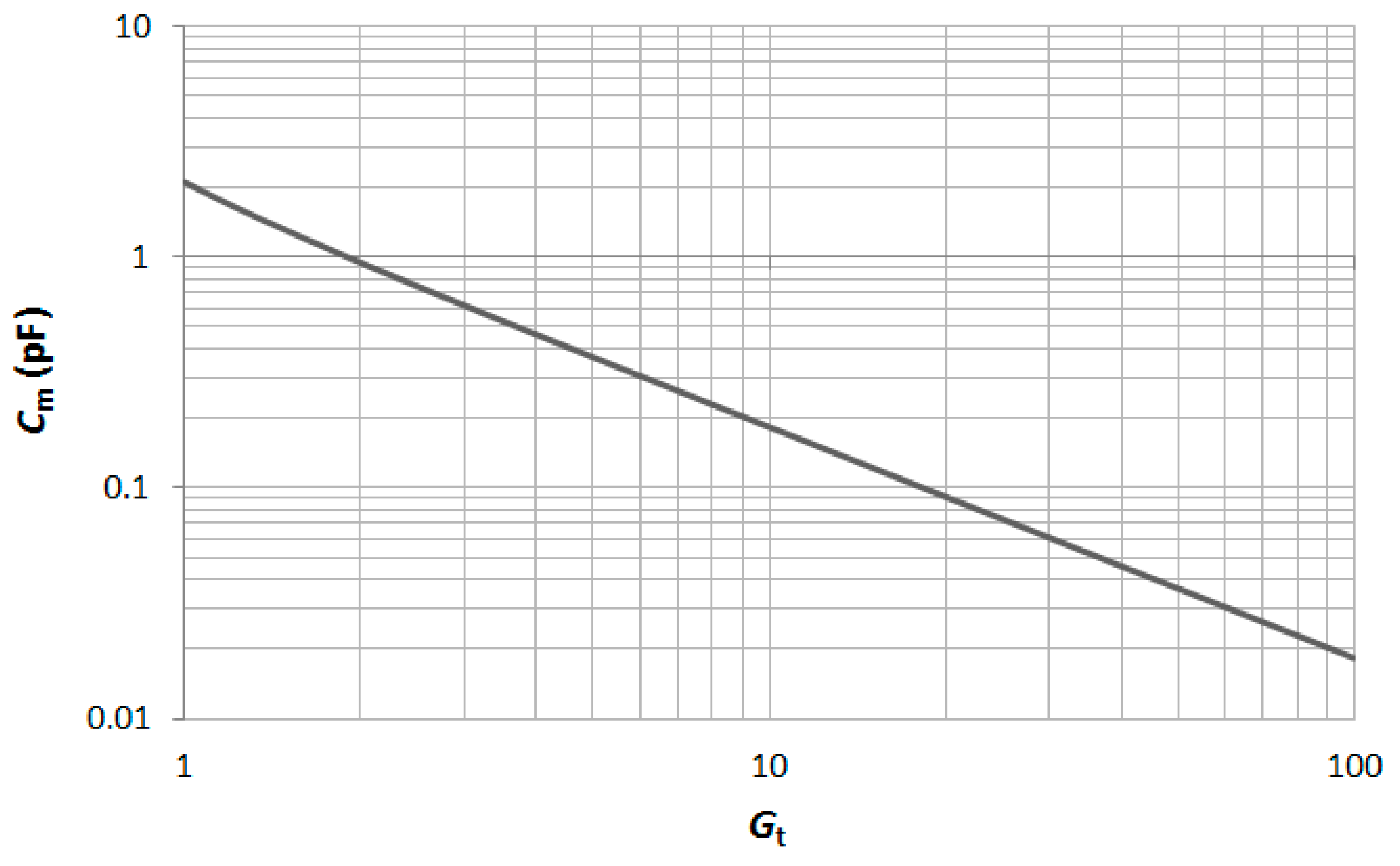
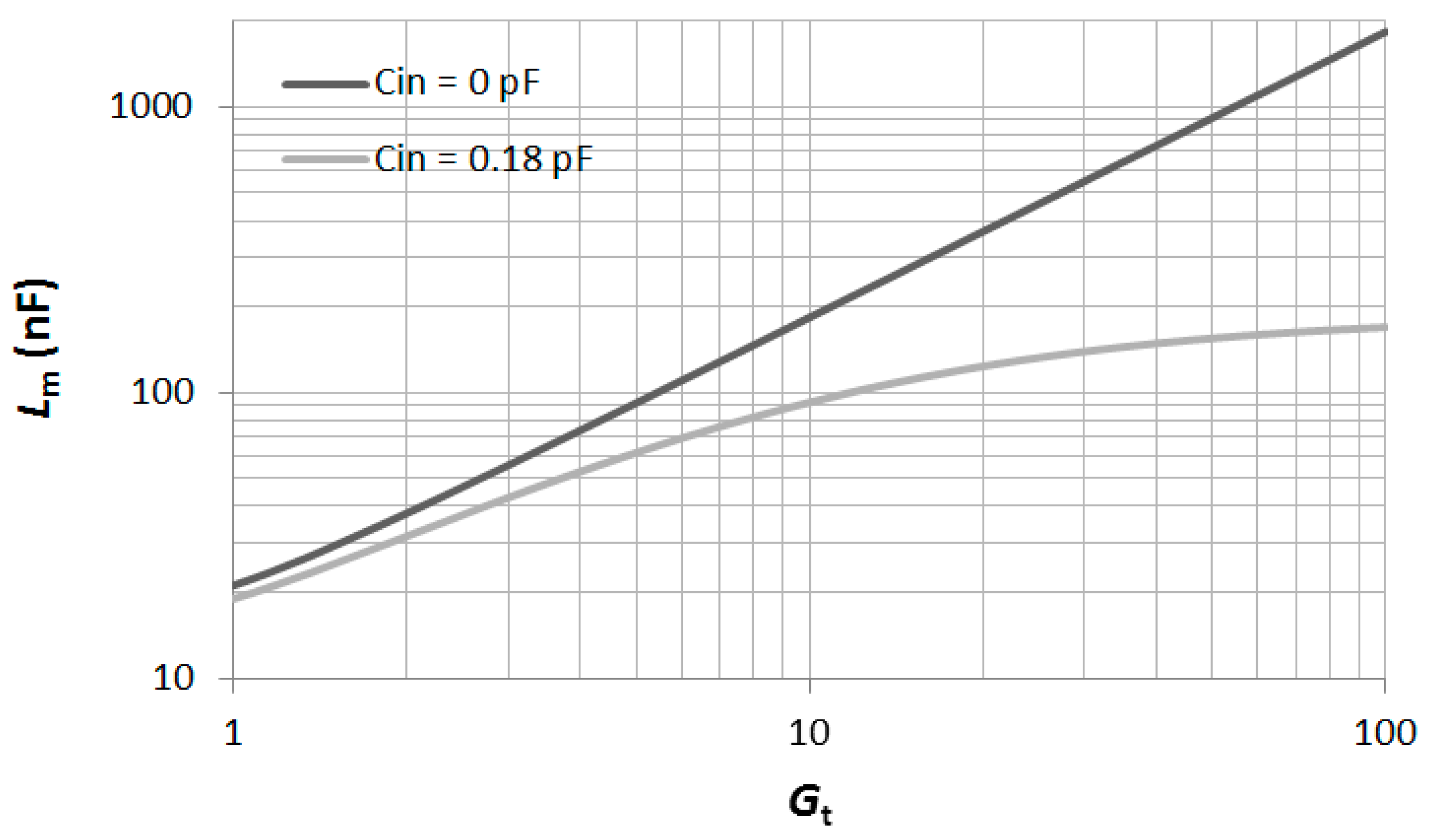
Appendix B. Lumped Model of the Inductor Including Parasitic Effects
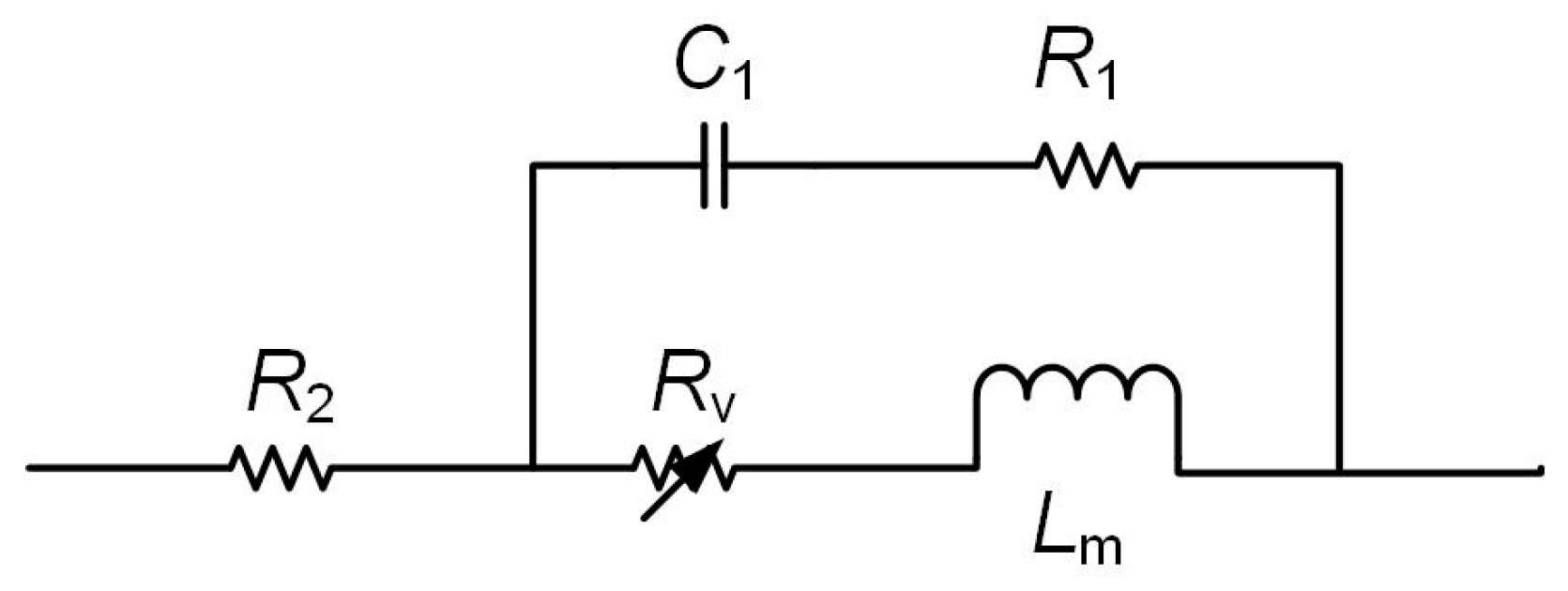
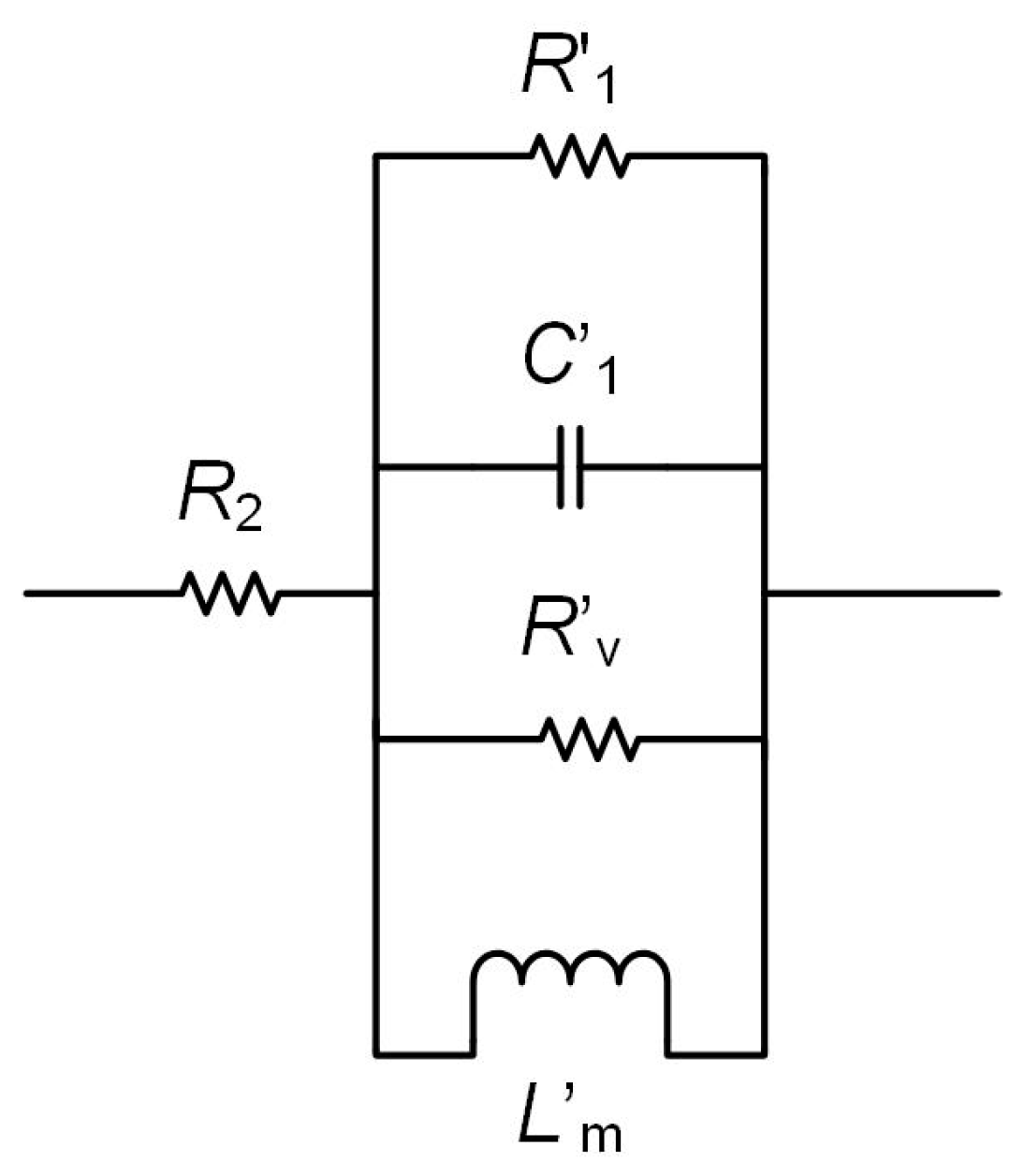
References
- Nintanavongsa, P.; Muncuk, U.; Lewis, D.R.; Chowdhury, K.R. Design Optimization and Implementation for RF Energy Harvesting Circuits. IEEE J. Emerg. Sel. Top. Circuits Syst. 2012, 2, 24–33. [Google Scholar] [CrossRef]
- Di Marco, P.; Stornelli, V.; Ferri, G.; Pantoli, L.; Leoni, A. Dual band harvester architecture for autonomous remote sensors. Sens. Actuators A Phys. 2016, 247, 598–603. [Google Scholar] [CrossRef]
- Shaker, G.; Chen, R.; Milligan, B.; Qu, T. Ambient electromagnetic energy harvesting system for on-body sensors. Electron. Lett. 2016, 52, 1834–1836. [Google Scholar] [CrossRef]
- Attaran, A.; Rashidzadeh, R.; Muscedere, R. Chipless RFID tag using RF MEMS switch. Electron. Lett. 2014, 50, 1720–1722. [Google Scholar] [CrossRef]
- Talla, V.; Kellogg, B.; Ransford, B.; Naderiparizi, S.; Gollakota, S.; Smith, J.R. Powering the Next Billion Devices with Wi-Fi. Commun. ACM 2015, 60, 83–92. [Google Scholar] [CrossRef]
- Pinuela, M.; Mitcheson, P.D.; Lucyszyn, S. Ambient RF Energy Harvesting in Urban and Semi-Urban Environments. IEEE Trans. Microw. Theory Tech. 2013, 61, 2715–2726. [Google Scholar] [CrossRef]
- Kaushik, K.; Mishra, D.; De, S.; Chowdhury, K.R.; Heinzelman, W. Low-Cost Wake-Up Receiver for RF Energy Harvesting Wireless Sensor Networks. IEEE Sens. J. 2016, 16, 6270–6278. [Google Scholar] [CrossRef]
- Singh, G.; Ponnaganti, R.; Prabhakar, T.V.; Vinoy, K.J. A tuned rectifier for RF energy harvesting from ambient radiations. AEU Int. J. Electron. Commun. 2013, 67, 564–569. [Google Scholar] [CrossRef]
- Sample, A.; Smith, J.R. Experimental results with two wireless power transfer systems. In Proceedings of the 2009 IEEE Radio and Wireless Symposium, San Diego, CA, USA, 18–22 January 2009; IEEE: New York, NY, USA, 2009; pp. 16–18. [Google Scholar]
- Mirzavand, F.; Nayyeri, V.; Soleimani, M.; Mirzavand, R. Efficiency improvement of WPT system using inexpensive auto-adaptive impedance matching. Electron. Lett. 2016, 52, 2055–2057. [Google Scholar] [CrossRef]
- Yi, J.; Ki, W.-H.; Tsui, C.-Y. Analysis and Design Strategy of UHF Micro-Power CMOS Rectifiers for Micro-Sensor and RFID Applications. IEEE Trans. Circuits Syst. I Regul. Pap. 2007, 54, 153–166. [Google Scholar] [CrossRef]
- Le, T.; Mayaram, K.; Fiez, T. Efficient Far-Field Radio Frequency Energy Harvesting for Passively Powered Sensor Networks. IEEE J. Solid-State Circuits 2008, 43, 1287–1302. [Google Scholar] [CrossRef]
- Liu, H.; Li, X.; Vaddi, R.; Ma, K.; Datta, S.; Narayanan, V. Tunnel FET RF Rectifier Design for Energy Harvesting Applications. IEEE J. Emerg. Sel. Top. Circuits Syst. 2014, 4, 400–411. [Google Scholar] [CrossRef]
- Shokrani, M.R.; Khoddam, M.; Hamidon, M.N.B.; Kamsani, N.A.; Rokhani, F.Z.; Shafie, S. Bin An RF Energy Harvester System Using UHF Micropower CMOS Rectifier Based on a Diode Connected CMOS Transistor. Sci. World J. 2014, 2014, 1–11. [Google Scholar] [CrossRef] [PubMed]
- Shameli, A.; Safarian, A.; Rofougaran, A.; Rofougaran, M.; De Flaviis, F. Power Harvester Design for Passive UHF RFID Tag Using a Voltage Boosting Technique. IEEE Trans. Microw. Theory Tech. 2007, 55, 1089–1097. [Google Scholar] [CrossRef]
- Soltani, N.; Yuan, F. A High-Gain Power-Matching Technique for Efficient Radio-Frequency Power Harvest of Passive Wireless Microsystems. IEEE Trans. Circuits Syst. I Regul. Pap. 2010, 57, 2685–2695. [Google Scholar] [CrossRef]
- Curty, J.-P.; Joehl, N.; Krummenacher, F.; Dehollain, C.; Declercq, M.J. A model for u-power rectifier analysis and design. IEEE Trans. Circuits Syst. I Regul. Pap. 2005, 52, 2771–2779. [Google Scholar] [CrossRef]
- Jordana, J.; Reverter, F.; Gasulla, M. Power Efficiency Maximization of an RF Energy Harvester by Fine-tuning an L-matching Network and the Load. Procedia Eng. 2015, 120, 655–658. [Google Scholar] [CrossRef] [Green Version]
- Abouzied, M.A.; Ravichandran, K.; Sanchez-Sinencio, E. A Fully Integrated Reconfigurable Self-Startup RF Energy-Harvesting System With Storage Capability. IEEE J. Solid-State Circuits 2017, 52, 704–719. [Google Scholar] [CrossRef]
- Nimo, A.; Grgić, D.; Reindl, L.M. Optimization of Passive Low Power Wireless Electromagnetic Energy Harvesters. Sensors 2012, 12, 13636–13663. [Google Scholar] [CrossRef] [PubMed]
- Chaour, I.; Fakhfakh, A.; Kanoun, O. Enhanced Passive RF-DC Converter Circuit Efficiency for Low RF Energy Harvesting. Sensors 2017, 17, 546. [Google Scholar] [CrossRef] [PubMed]
- Scorcioni, S.; Larcher, L.; Bertacchini, A. Optimized CMOS RF-DC converters for remote wireless powering of RFID applications. In Proceedings of the 2012 IEEE International Conference on RFID (RFID), Orlando, FL, USA, 3–5 April 2012; IEEE: New York, NY, USA, 2012; pp. 47–53. [Google Scholar]
- De Carli, L.G.; Juppa, Y.; Cardoso, A.J.; Galup-Montoro, C.; Schneider, M.C. Maximizing the Power Conversion Efficiency of Ultra-Low-Voltage CMOS Multi-Stage Rectifiers. IEEE Trans. Circuits Syst. I Regul. Pap. 2015, 62, 967–975. [Google Scholar] [CrossRef]
- Soyata, T.; Copeland, L.; Heinzelman, W. RF Energy Harvesting for Embedded Systems: A Survey of Tradeoffs and Methodology. IEEE Circuits Syst. Mag. 2016, 16, 22–57. [Google Scholar] [CrossRef]
- Agrawal, S.; Pandey, S.K.; Singh, J.; Parihar, M.S. Realization of efficient RF energy harvesting circuits employing different matching technique. In Proceedings of the Fifteenth International Symposium on Quality Electronic Design, Santa Clara, CA, USA, 3–5 March 2014; IEEE: New York, NY, USA, 2014; pp. 754–761. [Google Scholar]
- Wilas, J.; Jirasereeamornkul, K.; Kumhom, P. Power harvester design for semi-passive UHF RFID Tag using a tunable impedance transformation. In Proceedings of the 2009 9th International Symposium on Communications and Information Technology, Icheon, Korea, 28–30 September 2009; IEEE: New York, NY, USA, 2009; pp. 1441–1445. [Google Scholar]
- Lenaerts, B.; Puers, R. Omnidirectional Inductive Powering for Biomedical Implants. Analog Circuits and Signal Processing; Springer: New York, NY, USA, 2009. [Google Scholar]
- Paing, T.; Shin, J.; Zane, R.; Popovic, Z. Resistor Emulation Approach to Low-Power RF Energy Harvesting. IEEE Trans. Power Electron. 2008, 23, 1494–1501. [Google Scholar] [CrossRef]
- Dolgov, A.; Zane, R.; Popovic, Z. Power Management System for Online Low Power RF Energy Harvesting Optimization. IEEE Trans. Circuits Syst. I Regul. Pap. 2010, 57, 1802–1811. [Google Scholar] [CrossRef]
- Saini, G.; Sarkar, S.; Arrawatia, M.; Baghini, M.S. Efficient power management circuit for RF energy harvesting with 74.27% efficiency at 623nW available power. In Proceedings of the 2016 14th IEEE International New Circuits and Systems Conference (NEWCAS), Vancouver, BC, Canada, 26–29 June 2016; IEEE: New York, NY, USA, 2016; pp. 1–4. [Google Scholar]
- Han, Y.; Perreault, D.J. Analysis and Design of High Efficiency Matching Networks. IEEE Trans. Power Electron. 2006, 21, 1484–1491. [Google Scholar] [CrossRef]
- Sun, Y.; Fidler, J.K. Design method for impedance matching networks. IEEE Proc. Circuits Devices Syst. 1996, 143, 186. [Google Scholar] [CrossRef]
- Marian, V.; Allard, B.; Vollaire, C.; Verdier, J. Strategy for Microwave Energy Harvesting From Ambient Field or a Feeding Source. IEEE Trans. Power Electron. 2012, 27, 4481–4491. [Google Scholar] [CrossRef]
- Nimo, A.; Albesa, J.; Reindl, L.M. Investigating the effects of parasitic components on wireless RF energy harvesting. In Proceedings of the 2014 IEEE 11th International Multi-Conference on Systems, Signals & Devices (SSD14), Barcelona, Spain, 11–14 February 2014; IEEE: New York, NY, USA, 2014; pp. 1–6. [Google Scholar]
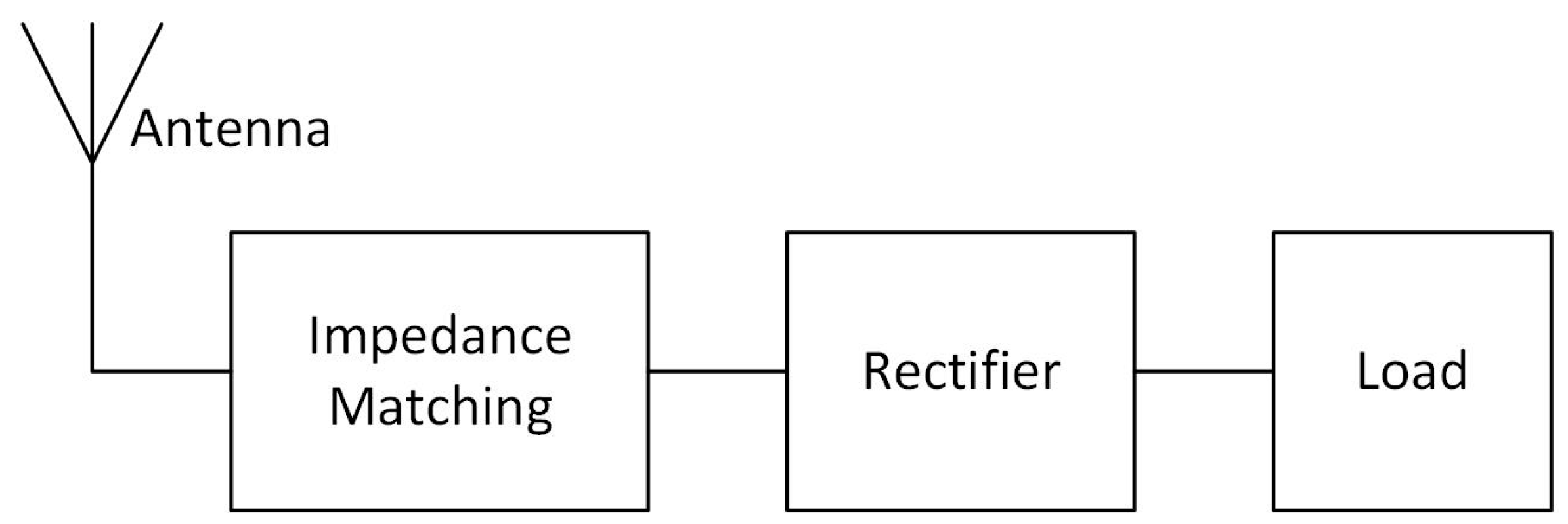
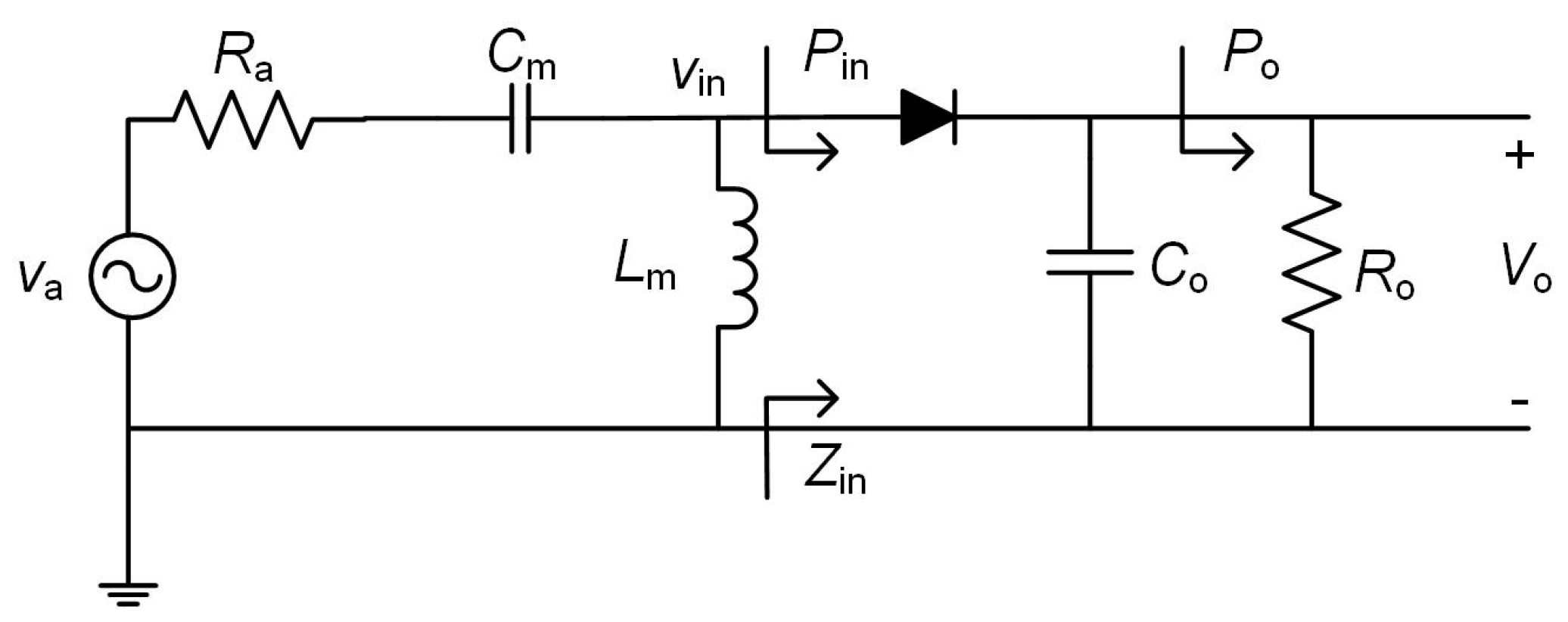

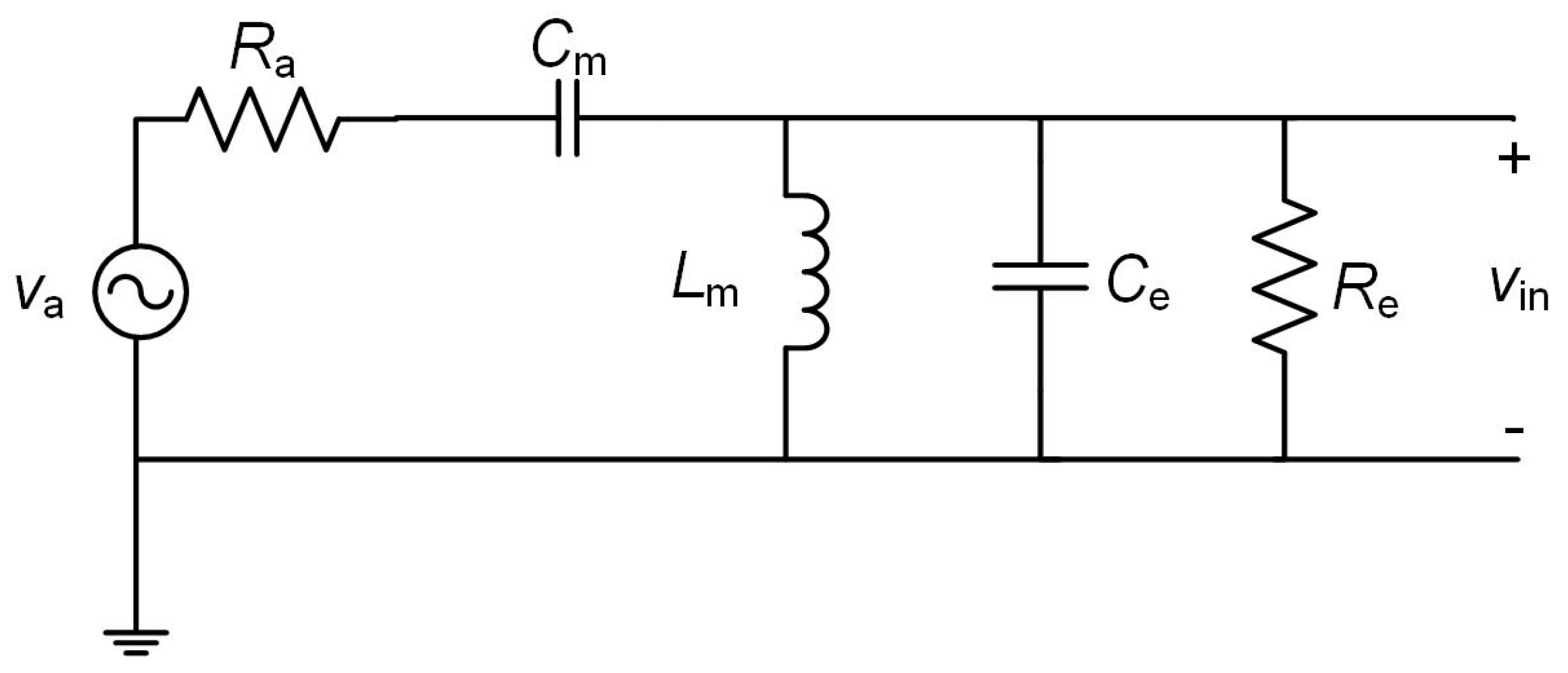
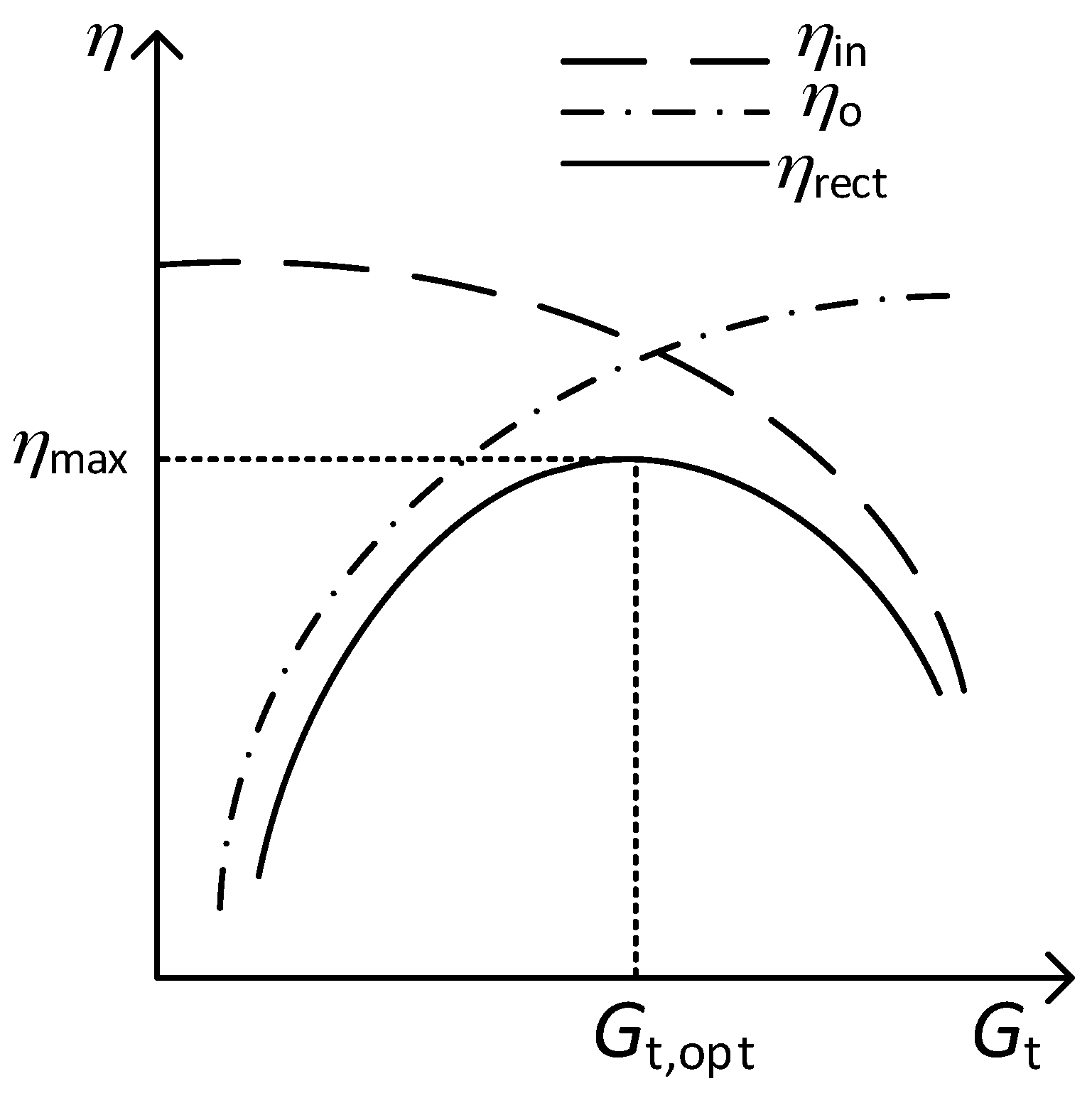
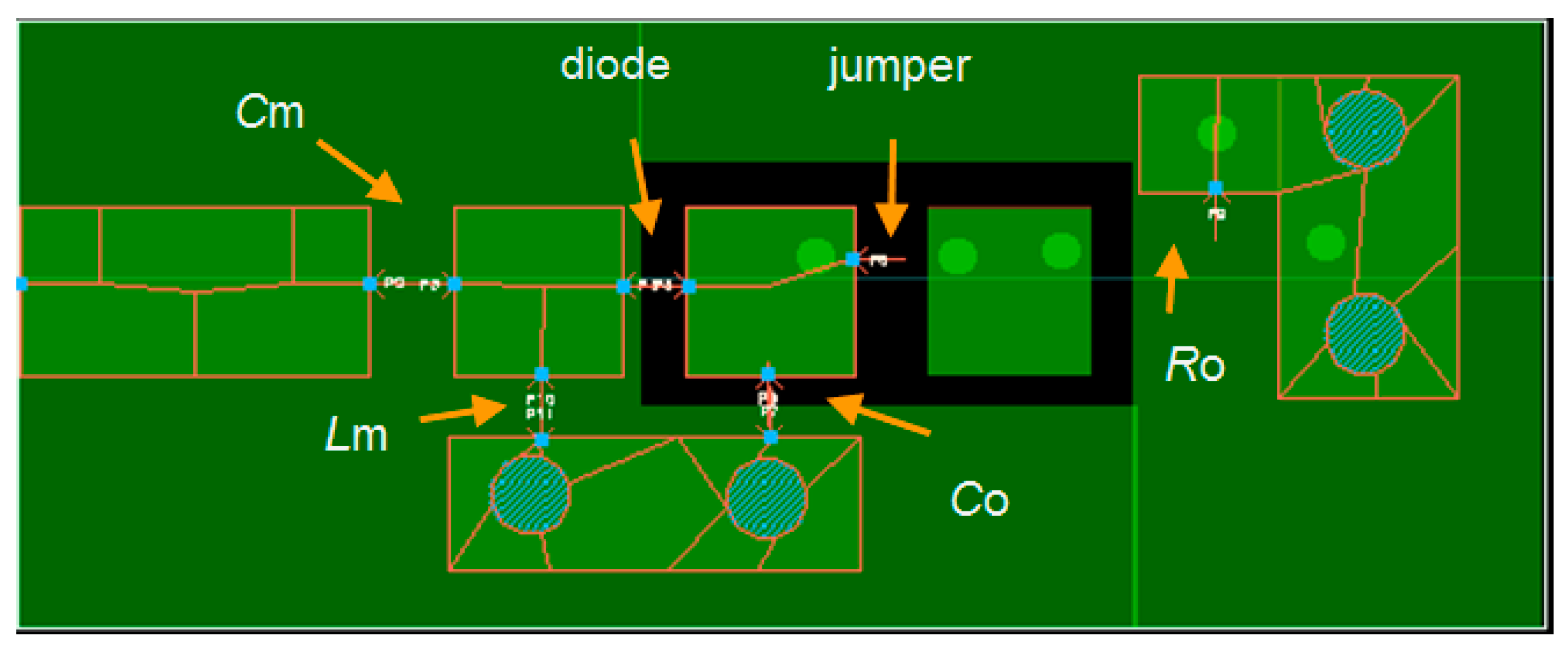
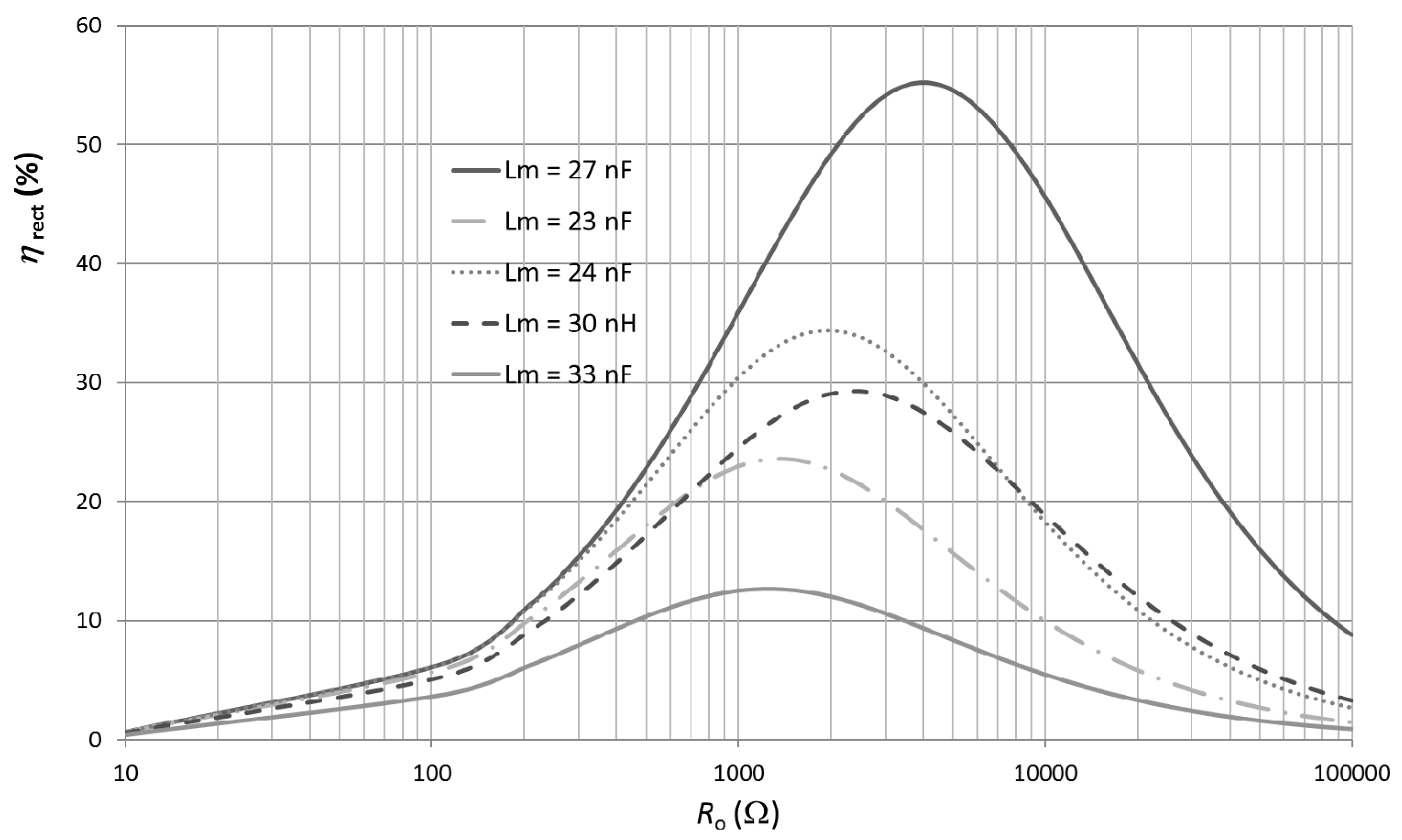
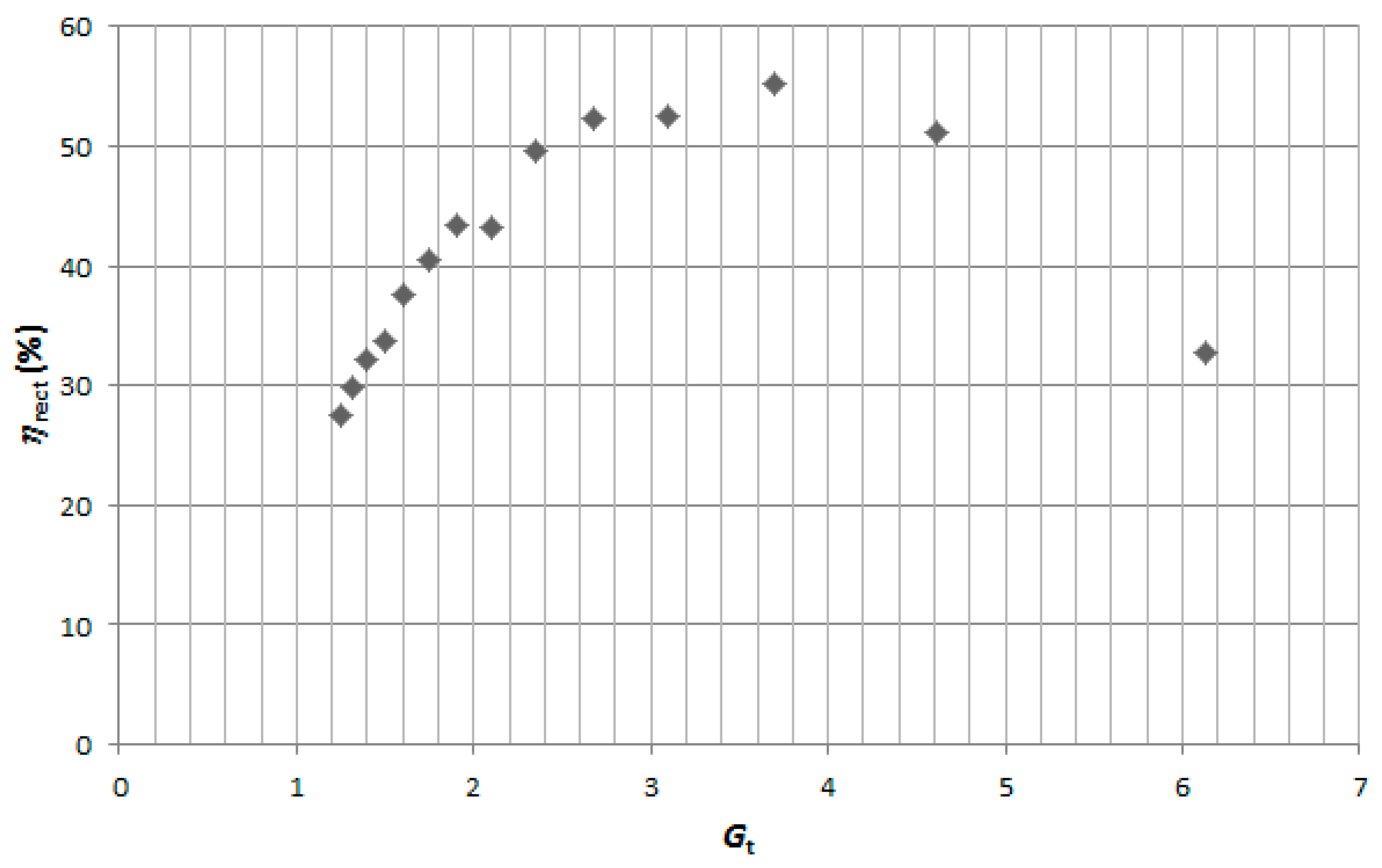
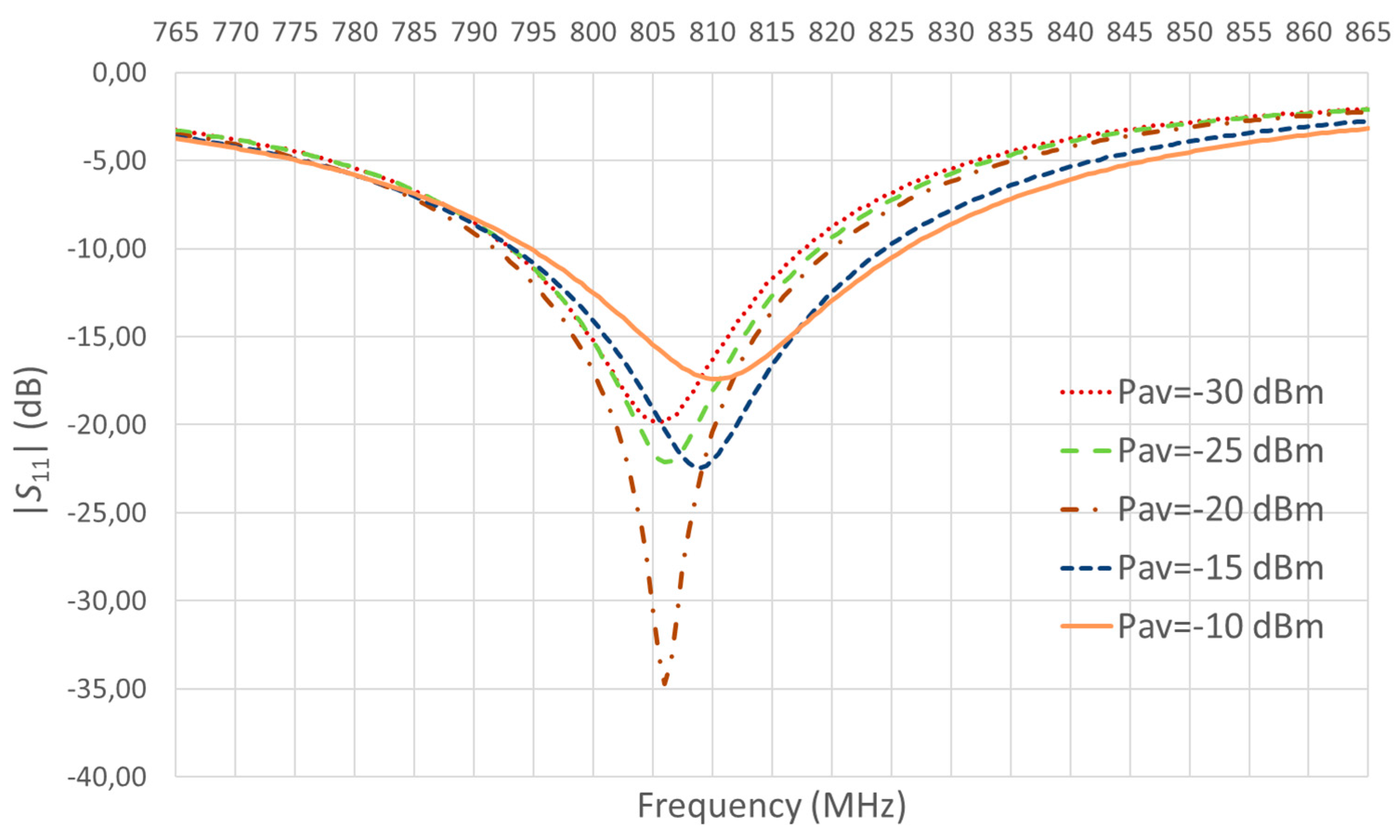
| Pav (dBm) | ηmax (%) | Gt | Cm (pF) | Lm (nH) | Ro (kΩ) | Vo (mV) |
|---|---|---|---|---|---|---|
| −30 | 10.9 | 5.48 | 0.3 | 30 | 8.6 | 30.7 |
| −25 | 18.6 | 5.48 | 0.3 | 30 | 7.0 | 64.2 |
| −20 | 30.8 | 3.70 | 0.5 | 27 | 4.6 | 119 |
| −15 | 44.6 | 3.70 | 0.5 | 27 | 4.4 | 249 |
| −10 | 55.2 | 3.70 | 0.5 | 27 | 4.0 | 470 |
| Pav (dBm) | −30 | −25 | −20 | −15 | −10 |
|---|---|---|---|---|---|
| Impedance (Ω) | 67.3 + j22.4 | 65.9 + j18.8 | 59.6 + j10.7 | 60.7 − j9.9 | 62.3 − j11.7 |
| Pav (dBm) | ηmax (%) | Ro (kΩ) | Vo (mV) |
|---|---|---|---|
| −30 | 15.7 | 5.7 | 30 |
| −25 | 24.6 | 4.6 | 60 |
| −20 | 36.0 | 4.7 | 130 |
| −15 | 47.2 | 4.5 | 260 |
| −10 | 55.2 | 4.5 | 500 |
© 2017 by the authors. Licensee MDPI, Basel, Switzerland. This article is an open access article distributed under the terms and conditions of the Creative Commons Attribution (CC BY) license (http://creativecommons.org/licenses/by/4.0/).
Share and Cite
Gasulla, M.; Jordana, J.; Robert, F.-J.; Berenguer, J. Analysis of the Optimum Gain of a High-Pass L-Matching Network for Rectennas. Sensors 2017, 17, 1712. https://doi.org/10.3390/s17081712
Gasulla M, Jordana J, Robert F-J, Berenguer J. Analysis of the Optimum Gain of a High-Pass L-Matching Network for Rectennas. Sensors. 2017; 17(8):1712. https://doi.org/10.3390/s17081712
Chicago/Turabian StyleGasulla, Manel, Josep Jordana, Francesc-Josep Robert, and Jordi Berenguer. 2017. "Analysis of the Optimum Gain of a High-Pass L-Matching Network for Rectennas" Sensors 17, no. 8: 1712. https://doi.org/10.3390/s17081712






